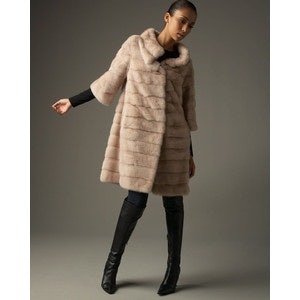Popularity Of Fur In Emerging Markets Offsets Plummeting Demand In Western Markets, Overcapacity Feared#

Canada's Globe and Mail recently posted an interesting article about the fur trade in China, which, along with other emerging markets like Russia, has been a source of steady profits for Canadian fur producers over the past several years. Following decades of decline in the North American market due to changing fashion tastes and ethical concerns, and steadily dropping demand in formerly red-hot markets like Japan and South Korea, China has become a rare bright spot for fur producers and a critical market for Canadian furriers. However, the speed at which the Chinese market has grown has fueled fears that a bubble in the Chinese fur market is about to pop, with these same furriers becoming once again the victims of sudden economic, taste, and capacity shifts.
[Toronto-based North American Fur Auctions, the world’s No. 3 fur auction house,] sold some $250 million worth of skins to China in 2008, accounting for more than 70% of the company’s total sales. And even as other important fur markets—Russia, in particular—dropped out almost entirely this year in the wake of the global financial crisis, China has turned that dip in global demand into an opportunity: Many Chinese manufacturers have seized on lower auction prices to increase their production; they’re betting that Chinese customers will more than pick up the slack.
The Chinese are besotted with luxury goods, but fur might well be the most in-demand luxury item of all. In Beijing and Shenyang, in the country’s frigid north and even across its monsoon-prone southeast coast, where winter temperatures can often climb into the high 20s, newly wealthy members of the country’s surging middle class can’t seem to get enough mink and wild fur coats.
The development couldn’t come at a better time for the industry. Fur sales in North America and Western Europe have collapsed in the past two decades; where customers in Chicago, New York, Montreal, Frankfurt and Milan were once the lifeblood of the fur trade, they barely warrant a footnote on the industry’s balance sheets today. So far this year, China has bought more than 80% of the global supply of raw skins. Companies like NAFA can’t afford to have their China efforts fail.
Fears stem from a combination of increasing competition both from local and imported European producers, overcapacity, and even the early indications of "luxury fatigue" in major cities. However, as the article explains, Canadian fur producers are confident that growth in smaller cities should make up for any lessening of demand elsewhere:
[E]ven though a few luxury business analysts have begun to worry that China’s major cities are starting to suffer luxury fatigue, Benedetti and Jansen contend that there’s room for plenty more growth in China, particularly in less-developed regions; the company’s agents are pushing into promising new areas, including Urumqi, a wealthy and—even by China’s standards—exceedingly fast-growing city in China’s northwest corner, near the Kazakhstani border.
But perhaps the most important step for the industry, psychically at least, is the few baby steps the fur trade has taken back into North America. Jansen, for one, argues that the industry has cleaned up its act on hunting and trapping methods; the company’s ranchers and trappers work ethically and humanely, he says. Fur promoters have seized on a new argument, too. Last winter, the Fur Council of Canada ran billboards in Canadian cities to announce that “Fur is Green.” “If we don’t use part of what nature produces, we will use petroleum-based synthetics or other materials that may damage the environment,” the campaign’s website elaborates. “We’ve got to get fur back onto shopping lists,” Jansen says.